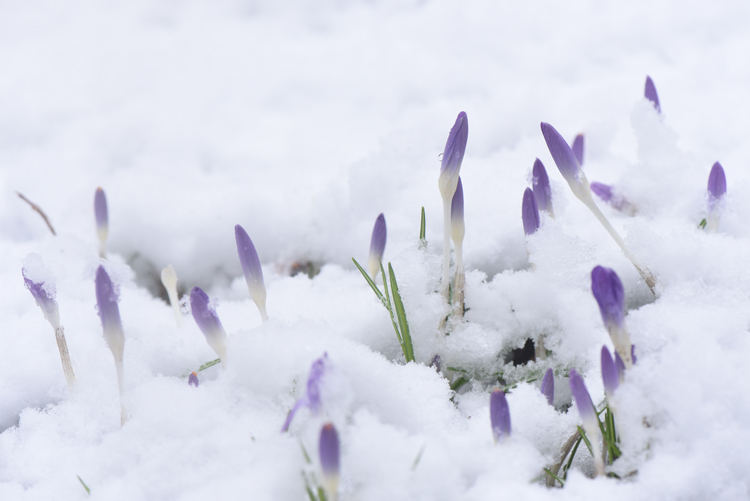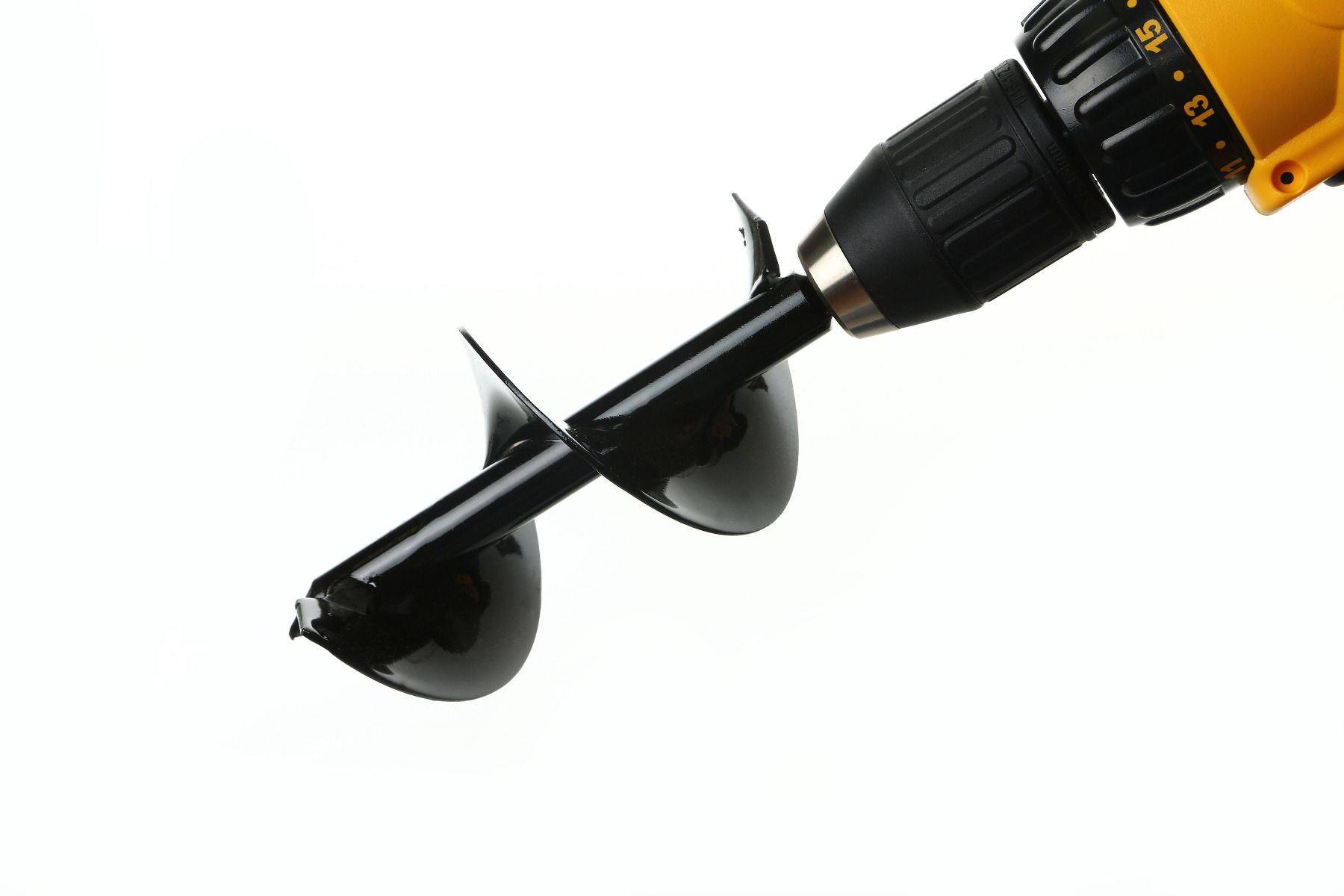Bulbs are planted now for spring flower surprises
Posted on: September 20, 2018 | Written By: Doug Oster |
Winter still had an icy grip on the garden after a brief thaw, when through the snow emerged the spectacular blue flowers of snow crocus, unaffected by the frigid temperatures. Even though I know where the flowers are planted, they are always a surprise. All it takes is a day or two in February as the angle of the sun rises to slightly warm the soil, signaling to the snow crocus that spring is here, even if it isn’t.

Snow crocus blooms are always a surprise when they emerge. Photos by Doug Oster
Those little flowers announce the start of another garden season and confirm that the endless winter is fading away, and spring is waiting patiently in the wings. Deprived of color for months, those flowers are why I plant bulbs. Well, it’s one of the reasons anyway. The beautiful and short-lived show begins with snowdrops and crocus continuing in earnest into summer as the last globes of alliums turn brown.
Most early spring blooming bulbs are planted now, including the big four — crocus, tulip, daffodil and hyacinths. There are many other bulbs to plant that should have a place in your garden, too. Planting bulbs in the fall is a gardening tradition, but one that’s fading. Every year I see fewer bulbs being offered locally. I can’t imagine a fall without adding some bulbs to my landscape. It’s the kind of work that’s rewarded months down the road, but there’s nothing that compares to the beauty of these spring blooms. As I traverse western Pennsylvania speaking to groups this time of the year, I beg them to put some bulbs in the ground, and I’m begging you, too. You’ll be so happy when they bloom.
Bulbs are planted three times as deep as the bulb itself. In the case of a daffodil that’s substantial — six or eight inches — but a tiny snowdrop only needs to be nestled into the ground an inch below the surface.
It was 30 years ago when I discovered a tool called a bulb auger. It’s a big drill bit that fits on any electric or battery-powered drill, and it makes bulb planting fun. Last year I bought a 20-volt, battery-powered drill for under $60 at my local hardware store. I wish I would have had one that powerful over the past decades for planting. For the past several years, I’ve used the Power Planter Bulb Auger. It’s indestructible, and it’s only seven inches long, making the tool perfect for planting while kneeling or sitting. The hexagonal shaft prevents slipping while drilling.

A bulb auger is the best tool for planting bulbs.
I’ll buy what I need locally right now. I prefer to find bulbs in bins as I can sort through them for the biggest and firmest. When it comes to daffodils in particular, the end that produces a flower is called a nose. Some will have one, two or three noses — the more of them there are, the more flowers in spring. As the season progresses, bulbs will get cheaper, discounted to half price around Thanksgiving. They can be planted until the ground freezes solid.
I’ve been known to swoop into nurseries and buy everything they have left at a substantial discount.
When thinking about where to plant your bulbs, know that most need to dry out during the offseason. Hillsides, drip lines of trees and anywhere with well-drained soil is perfect. They’ll enjoy some sun as the foliage fades to return energy to the bulb. They can live for decades or longer in the same place.

Daffodils are the harbinger of spring. There are 13 different divisions of the flowers, each one has a different type of bloom. They are deer proof and easy to grow.
There are great online stores, too, but be sure to deal with one that’s reputable, telling you the size of the bulbs you’re buying. Brent and Becky’s Bulbs, Old House Gardens, John Scheepers, Van Engelen, Longfield Gardens, and Colorblends are a few I like, but there are plenty more good sources out there.
I bought some cool stuff last season during Old House Gardens’ Dutch auction. At the end of the shipping season, they put everything left on sale, reducing the price daily until they are gone. The company offers heirloom bulbs, and many are no longer available anywhere else and oftentimes have a fascinating history. If you’re interested in growing something wonderful and different, check them out.
Here’s a look at my favorite bulbs and how to keep them safe from critters.
Doug Oster is editor of Everybody Gardens, a website operated by 535Media, LLC. Reach him at 412-965-3278 or doster@535mediallc.com. See other stories, videos, blogs, tips and more at everybodygardens.com.